How to Incorporate Sibling Support in At-Home ABA Therapy
Empowering Sibling Participation in ABA Therapy for Autism Support
Understanding the Importance of Sibling Involvement
Incorporating sibling support in at-home Applied Behavior Analysis (ABA) therapy plays a fundamental role in enhancing the therapy outcomes for children with Autism Spectrum Disorder (ASD). Siblings who engage in this process learn valuable skills, improve familial relationships, and contribute positively to the therapeutic experience. This article explores how neurotypical siblings can become active participants in ABA therapy, addressing their emotional needs and challenges along the way.
Getting Siblings Actively Involved in ABA Therapy
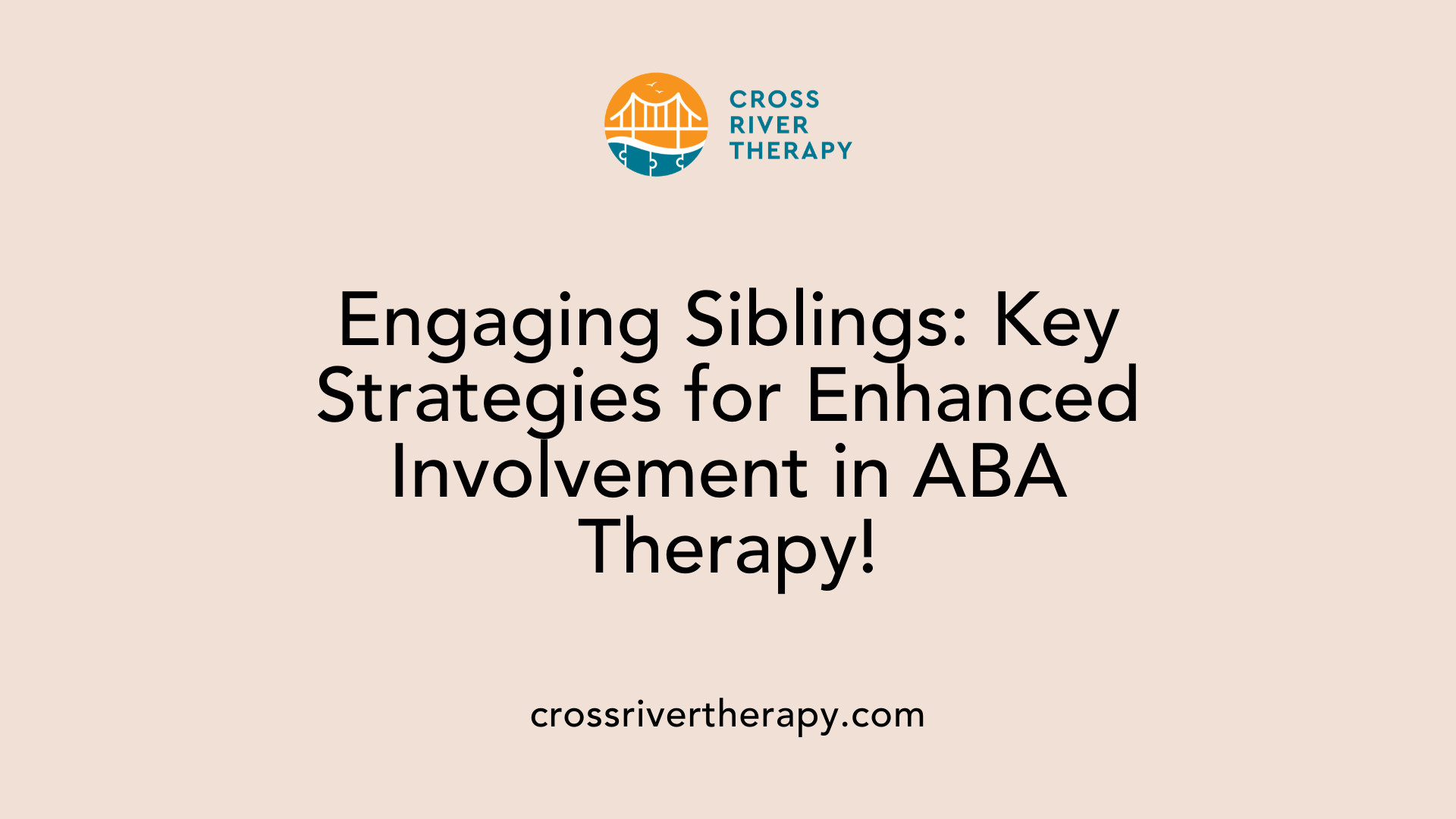
How can siblings be involved in at-home ABA therapy for children with autism?
Siblings can significantly contribute to at-home ABA therapy for children with autism by engaging in various activities that reinforce what the child learns during sessions. These activities can include:
- Active Participation: Siblings can observe and sometimes assist during therapy sessions, fostering a sense of teamwork.
- Learning Educational Techniques: Teaching neurotypical siblings about autism helps them understand their sibling's behavior and embrace effective communication methods.
- Reinforcement of Skills: Using positive reinforcement techniques learned in therapy allows siblings to support their brother or sister in daily life, enhancing their interpersonal connections.
Encouraging involvement in structured play sessions leads to the development of social skills and emotional regulation for both siblings, promoting a healthier sibling dynamic.
What are the educational benefits for siblings?
Including siblings in the therapeutic process yields substantial educational benefits:
- Understanding Autism: In-home ABA providers educate siblings about autism’s symptoms and manifestations, improving their overall comprehension of the disorder.
- Building Empathy: Participating in therapy sessions exposes siblings to the challenges faced by their autistic sibling, fostering empathy and enhancing family cohesion.
- Skill Development: Siblings learn valuable skills, such as patience and problem-solving acts, that will serve them well both within and outside the family context.
What structured activities can encourage involvement?
Engaging in structured activities within ABA therapy can create opportunities for siblings to connect:
- Play-based Interactions: Activities like games, art projects, or family outings can foster collaboration and inclusion.
- Goal-setting Collaboration: Involving siblings in setting therapeutic goals establishes a sense of responsibility and unity.
- Sharing Success: Recognition of each child's achievements encourages a celebration of individuality and unity in family dynamics.
In summary, fostering sibling involvement in ABA therapy not only aids the therapeutic process but enhances familial bonds and promotes a supportive environment for all children, regardless of their developmental needs.
Strengthening Sibling Relationships Through ABA Therapy
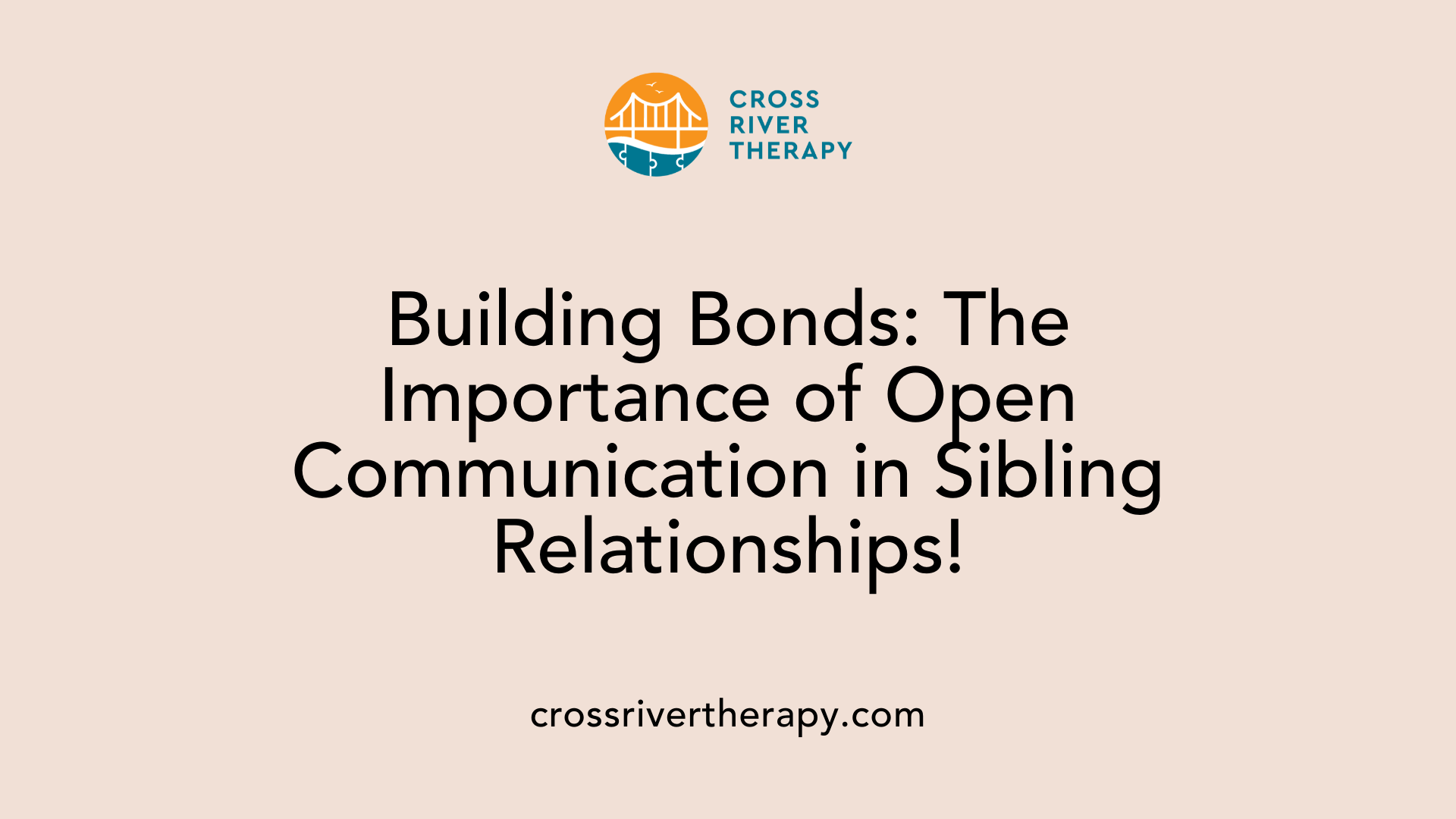
How Can Open Communication Foster Understanding?
Involving siblings in the therapeutic process of Applied Behavior Analysis (ABA) therapy is vital for enhancing understanding and empathy. Parents can facilitate this by creating safe spaces for siblings to express their emotions, ensuring they feel heard and validated. Age-appropriate discussions about autism can help siblings recognize that it’s a developmental disorder affecting their brother or sister’s perception of the world.
Encouraging dialogues about feelings, including potential guilt or embarrassment, allows siblings to process their emotions. This open communication fosters a strong emotional foundation necessary for nurturing cohesion within the family.
What Role Do Shared Activities Play in Bonding?
Shared activities serve as a significant tool for promoting bonding among siblings. Engaging in structured play and collaboration during ABA therapy can enhance connections by encouraging teamwork and positive interactions. These shared experiences not only bolster relationship dynamics but also allow siblings to develop social skills essential for interacting with each other.
Parents can enhance these relationships by facilitating outings and activities that cater to the interests of both siblings. Scheduling one-on-one time with each child reinforces their value in the family and prevents feelings of neglect. Programs like sibling support groups also create platforms for neurotypical siblings to share experiences and coping strategies.
By prioritizing collective activities and validating each sibling's unique needs, families can foster an atmosphere of empathy, understanding, and support that ultimately strengthens sibling relationships.
Impact of Sibling Involvement on Therapy Outcomes
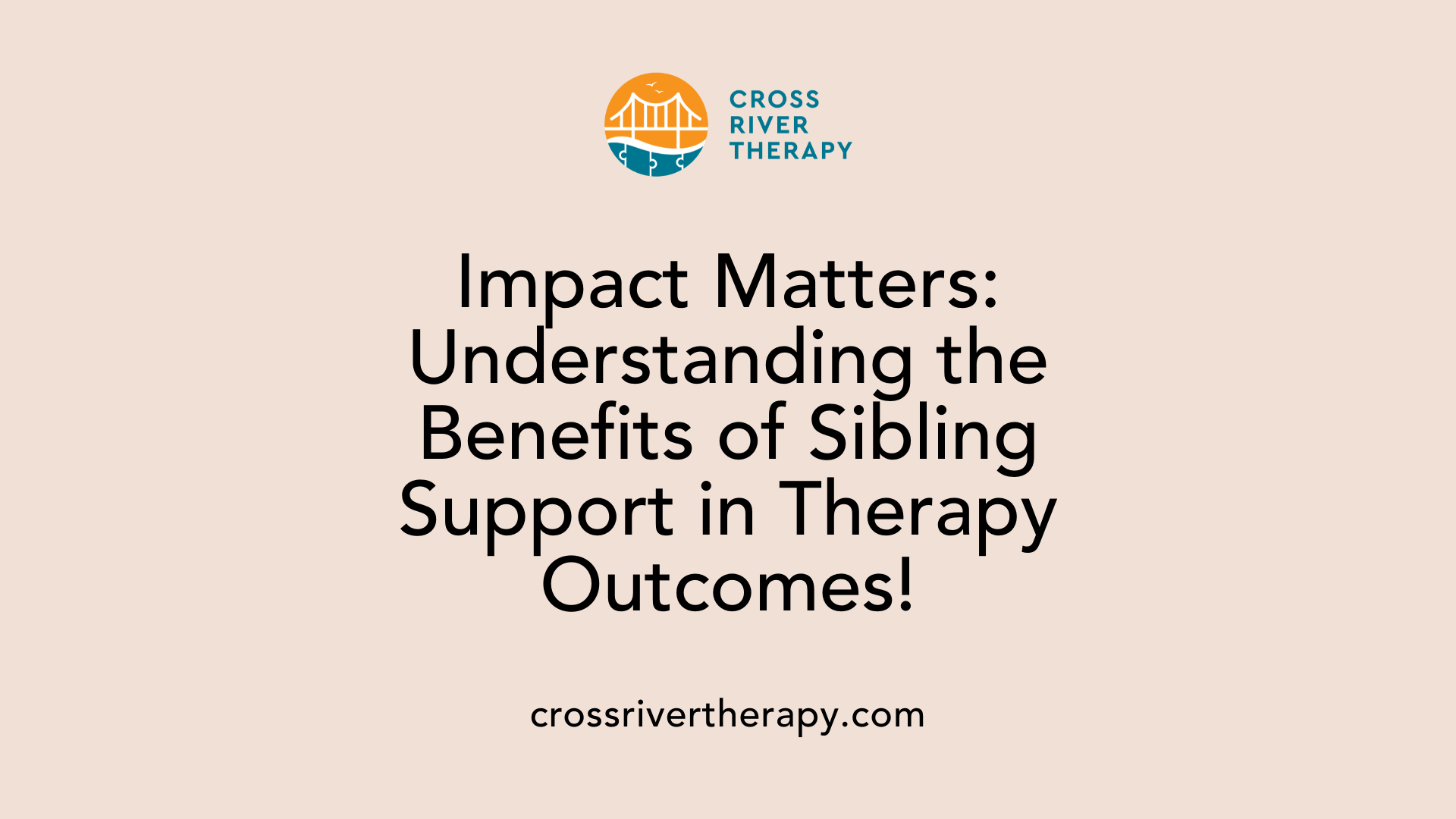
What are the benefits of sibling support in ABA therapy for families and therapy outcomes?
Sibling support in ABA therapy brings about numerous advantages that significantly impact both family dynamics and therapy results. Actively involving siblings creates stronger family cohesion and emotional support, which is essential for fostering relationships in families with children diagnosed with Autism Spectrum Disorder (ASD).
Strengthening Relationships
- Promotes Empathy and Understanding: Participating together in therapy helps siblings develop a deeper understanding of autism, fostering compassion towards their autistic sibling.
- Reduces Feelings of Neglect: Participating actively counters any feelings of jealousy or neglect that neurotypical siblings might feel, allowing them to see their own importance in the family unit.
Enhancing Therapeutic Outcomes
- Modeling Positive Behavior: Siblings often serve as natural peer models, reinforcing social skills and communication techniques learned during ABA therapy.
- Tailored Therapy Goals: Engaging siblings promotes personalized goal-setting that reflects the family's unique needs, resulting in more effective strategies that enhance therapy.
Emotional Growth
- Building Coping Strategies: Sibling involvement equips both the autistic child and their siblings with problem-solving tools for navigating challenging situations, which leads to overall emotional resilience.
- Facilitating Family Discussions: Open communication fostered during therapy sessions helps normalize discussions about autism, paving the way for stronger, more supportive relationships.
By creating a collaborative atmosphere in therapy, families not only address individual needs but also cultivate an environment where all siblings feel valued, leading to improved overall family dynamics and more effective ABA therapy outcomes.
| Benefit of Involvement | Description | Impact on Therapy |
|---|---|---|
| Empathy Development | Understanding autism fosters compassion among siblings | Improves sibling interactions; enhances therapy effectiveness |
| Emotional Resilience | Coping strategies learned together strengthen bonds | Better management of stress and challenges during therapy |
| Individual Value | Siblings feel acknowledged and empowered through involvement | Decreasing jealousy; reinforcing positive reinforcement at home |
Practical Approaches to Engage Siblings
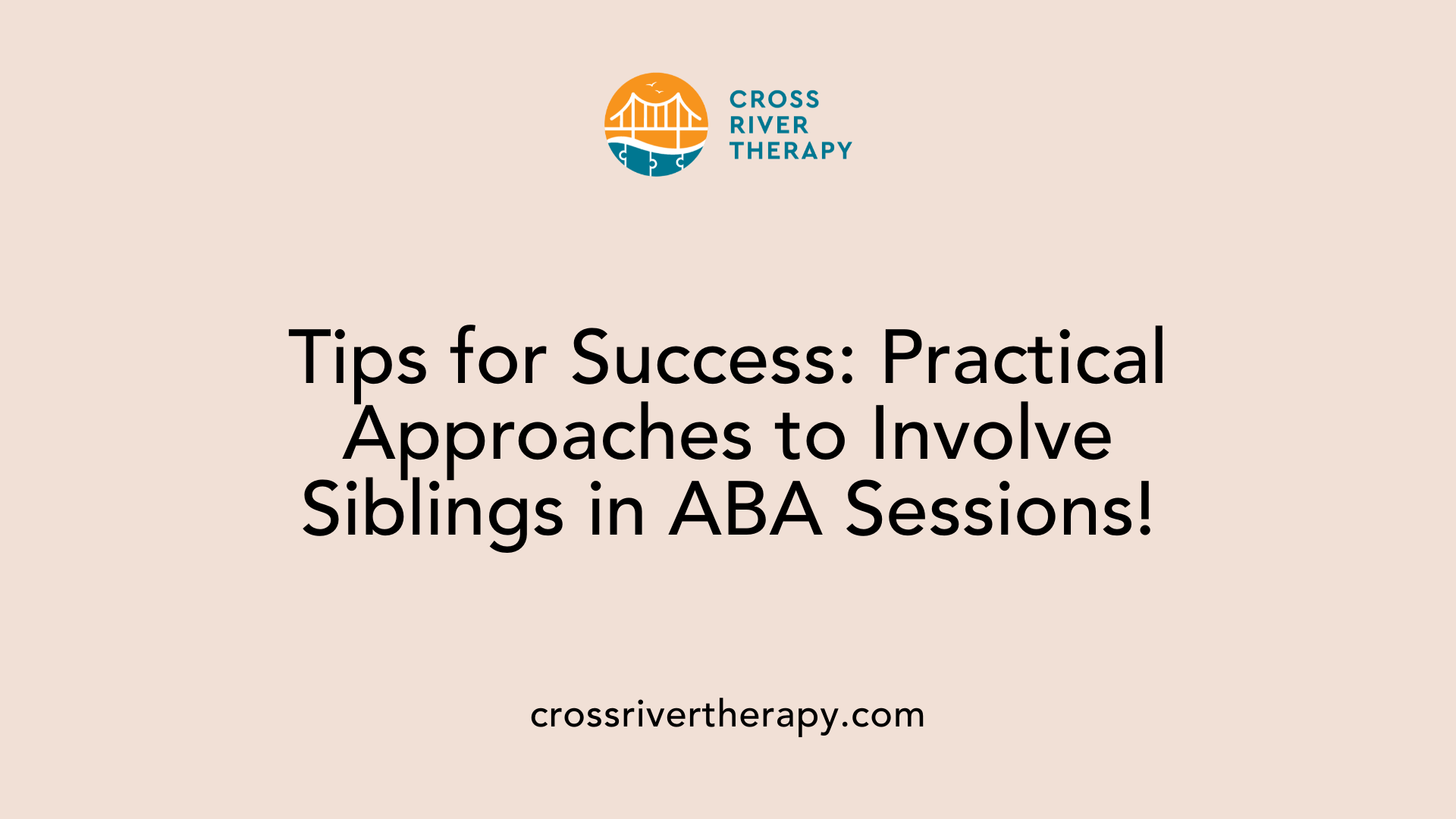
What are practical tips for enhancing sibling involvement during at-home ABA sessions?
To effectively engage siblings in at-home ABA sessions, education is key. Parents should share age-appropriate resources about autism to foster understanding and empathy. This might include informative books that explain autism in a relatable manner, encouraging open dialogue where siblings feel comfortable asking questions.
Incorporating simple joint activities is also beneficial. Tasks like working together on puzzles, drawing, or engaging in play can strengthen their bond without imposing pressure. These shared moments provide opportunities for siblings to learn cooperation and communication skills organically.
Regular family discussions regarding therapy progress allow for each member's voice to be heard, making everyone feel valued and respected. Acknowledging siblings’ emotions during these conversations is essential; it helps them process their feelings and feel supported in their role.
Celebrating achievements is another effective strategy. Recognizing successes in both their own and their sibling's journey fosters a positive environment. It enables siblings to appreciate their unique roles within the family, which ultimately enhances their relationship and involvement in therapy sessions.
Building Emotional Resilience in Siblings
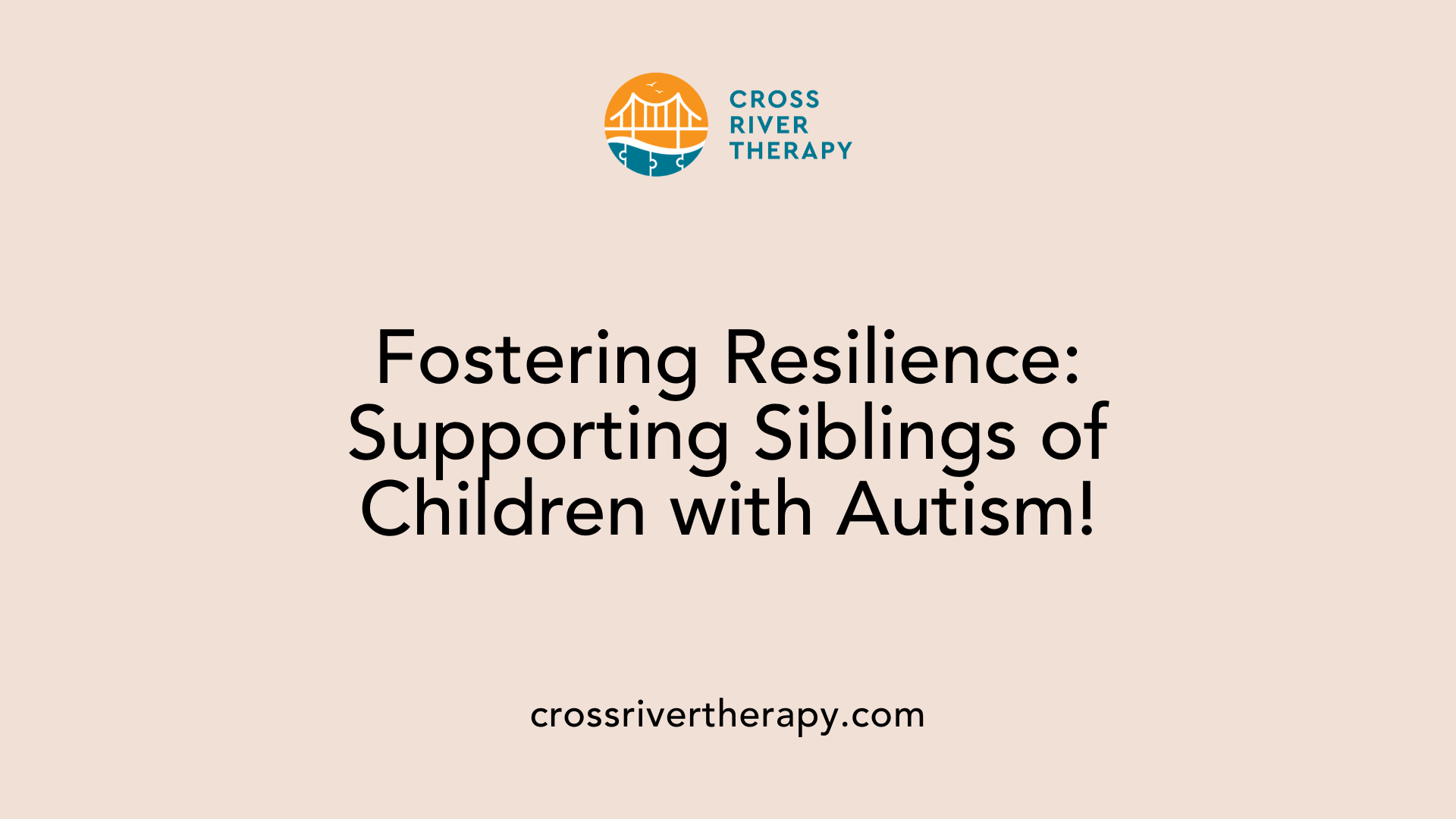
How can families provide emotional support to siblings of children with autism?
Families play a vital role in supporting siblings of children with autism. Ensuring open communication is paramount. When siblings feel safe to express their feelings, whether it’s confusion, jealousy, or frustration, they can process their experiences more effectively. Parents should dedicate individual time to each sibling, engaging in activities that affirm their unique interests and contributions to the family.
Educating siblings about autism is also crucial. Using age-appropriate resources helps them understand the condition and how it affects their sibling. Programs like ABA therapy can involve them in learning social skills and techniques that promote positive interactions. This education fosters empathy and acceptance among siblings, allowing for stronger emotional connections.
Engaging siblings in support groups creates opportunities for them to connect with peers who face similar situations. These platforms not only offer emotional support but also equip them with coping strategies. Positive interactions and shared activities reinforce bonds, making siblings feel valued and understood.
Lastly, acknowledging siblings' feelings, including any sense of unfairness in treatment, validates their emotions. Teaching healthy coping strategies ensures they develop resilience and emotional well-being, enabling them to navigate their challenges more effectively.
Navigating Challenges Faced by Neurotypical Siblings
What challenges do siblings of children with autism face, and how can they be addressed?
Siblings of children with autism often confront a range of emotional hurdles. They may feel neglected as parents focus more on the autistic sibling's needs, leading to feelings of frustration and even anger. The unique dynamics within these families can create confusion, especially when siblings grapple with understanding their brother or sister’s behavior, which can sometimes be challenging or unpredictable.
In social settings, these neurotypical siblings may encounter embarrassment or pressure to explain their sibling’s actions. The sense of responsibility can weigh heavily on them, as they try to manage their feelings and support their family. Parents play a crucial role here. Education about autism should begin early, ensuring that siblings comprehend their sibling's condition and behavior. This fosters empathy and understanding.
To mitigate feelings of neglect, parents should prioritize individual attention for each child. Devoting time to engage in activities that resonate with each sibling ensures they feel valued. Moreover, open communication about feelings—including any guilt or discomfort related to autism—can facilitate sharing and strengthen family bonds.
Engagement in support groups provides siblings a safe space to share their unique challenges. These groups offer coping strategies and emotional support, enabling them to foster resilience and better navigate their family dynamics. By cultivating understanding and promoting shared experiences, parents can nurture healthier relationships among siblings and support overall family well-being.
Creating a Supportive Home Environment
Routine Opportunities for Sibling Collaboration
Creating a family routine that includes both the child with autism and their neurotypical siblings fosters collaboration and strengthens family ties. When siblings participate in daily activities together, they contribute to a sense of belonging and value within the family structure. This involvement can be promoted through structured ABA therapy sessions, where activities are designed to encourage teamwork through play.
Parents might set fun collaborative goals, such as working together on a project or playing a favorite game, which not only solidifies their bond but also allows siblings to learn vital social skills and positive interaction behaviors. Incorporating individual interests during these activities helps satisfy each child's uniqueness, ensuring that all feel appreciated.
Family-Centered Therapy Goals
A family-centered approach in ABA therapy shifts the focus beyond the child with autism to the entire family. Collaborative goal-setting in therapy sessions invites siblings to take ownership of their roles within the family, fostering unity and a shared responsibility for supporting each other.
This approach is complemented by regular family meetings led by ABA providers where everyone can express feelings and celebrate personal achievements, providing a safe space for open communication. As they engage in these goals collectively, siblings not only support their autistic sibling but also enhance their own emotional and social skills, leading to improved relationships in the long term.
Promoting Empathy and Understanding Among Siblings
Educational Workshops for Siblings
Educational workshops are crucial in helping neurotypical siblings understand autism and its impact on family dynamics. These workshops can be structured to cover various topics, such as:
- Understanding Autism: Knowledge about the spectrum can help siblings grasp the nuances of their brother or sister’s behavior.
- Communication Techniques: Learning how to communicate effectively can enhance their interactions and foster better relationships.
- Emotional Support Strategies: Training siblings on giving emotional support helps them navigate their feelings, promoting resilience.
By providing siblings with structured learning opportunities, families can ensure that they feel informed and supported.
Shared Experiences Nurturing Empathy
Shared activities between siblings play a significant role in developing empathy and understanding. These experiences encourage:
- Connection: Participating in joint activities fosters a sense of teamwork and shared goals.
- Mutual Understanding: Engaging in scenarios where they both take part helps siblings see each other’s perspectives.
- Celebration of Individuality: Recognizing each child's unique talents while supporting each other strengthens family bonds.
Encouraging shared experiences promotes empathy while ensuring all siblings feel valued and understood.
The Role of Sibling Support Groups
Emotional and Educational Support
Sibling support groups serve as vital resources where siblings of children with autism can gather and share their experiences. These groups provide emotional backing, allowing siblings to voice feelings such as confusion, jealousy, and frustration. In these settings, they can learn that their emotions are valid and that others share similar challenges.
Additionally, educational aspects of the support groups are crucial. Workshops and discussions often include topics relating to autism, coping strategies, and techniques for fostering empathy and understanding. This knowledge equips siblings with the insights needed to navigate their unique family dynamics.
Providing Connections for Siblings
Beyond emotional and educational support, these groups foster meaningful connections among siblings. Creating a shared space helps forge friendships based on common experiences, reducing feelings of isolation. Siblings also learn from one another, gaining new perspectives that can enhance how they support their brother or sister with autism.
Encouraging participation in sibling support groups ultimately contributes to healthier family relationships, making a long-lasting positive impact on both the siblings and the entire family unit.
Embracing a Holistic Family Approach
Involving siblings in at-home ABA therapy strengthens family bonds and enriches the therapy experience for children with autism. By fostering empathy, open communication, and active participation, neurotypical siblings can significantly contribute to the development and well-being of their sibling with autism. As families embrace these strategies, they pave the way for improved dynamics and more supportive, understanding relationships among all family members. With intentional involvement and by addressing the emotional needs of all children, families can create a nurturing environment that benefits everyone.
References
- Enabling Siblings to Understand and Bond with Their Autistic ...
- Supporting Siblings in ABA Therapy - ABATherapistJobs.com
- ABA Family Therapy: Nurturing Positive Relationships in Autism ...
- How to Support Siblings of Children with Autism?
- Help Siblings of Children with Autism Thrive - Strive ABA Consultants
- Sibling Support—Autism Toolkit - Pittsford Pediatrics
- Considerations For Sibling Involvement In Your Child's ABA Program
- Supporting Sibling Relationships in Autism Families Using ABA
- Empowering Siblings in the ABA Therapy Journey - Brightside ABA



